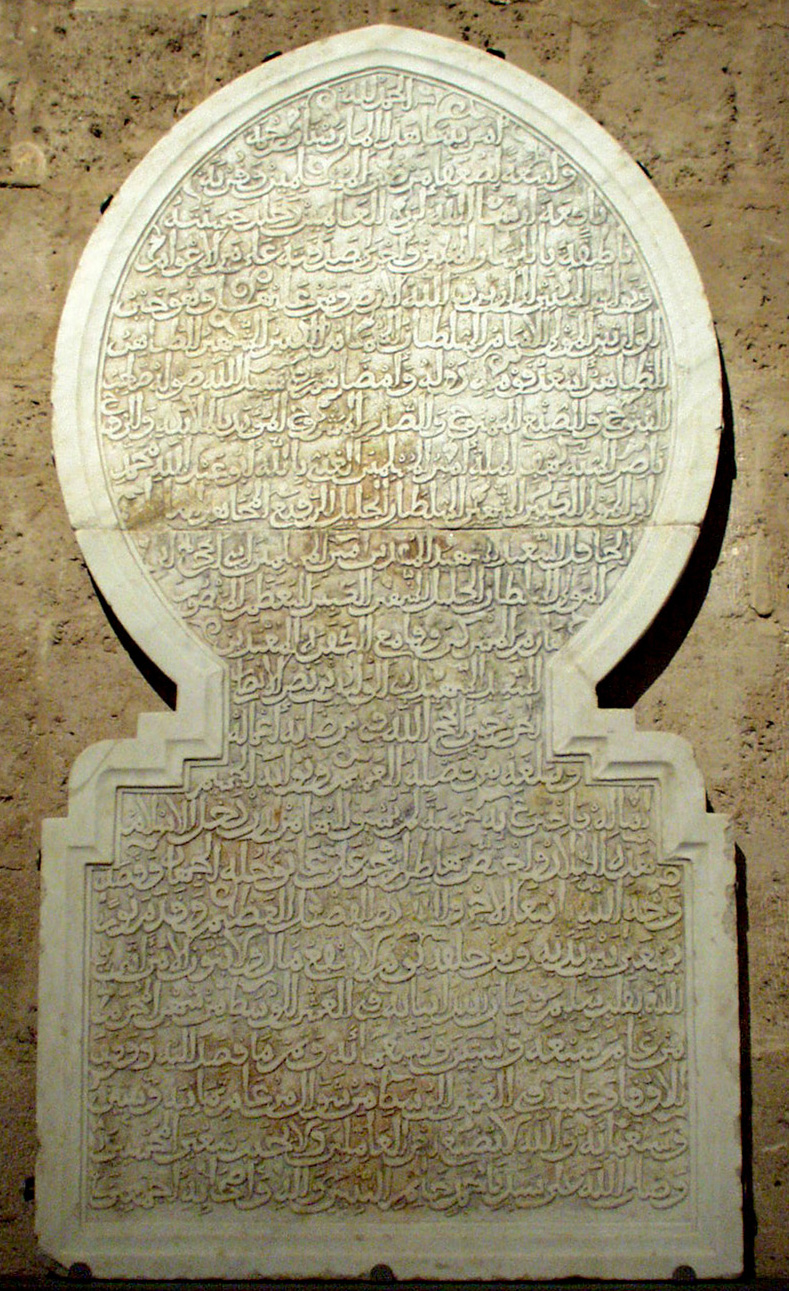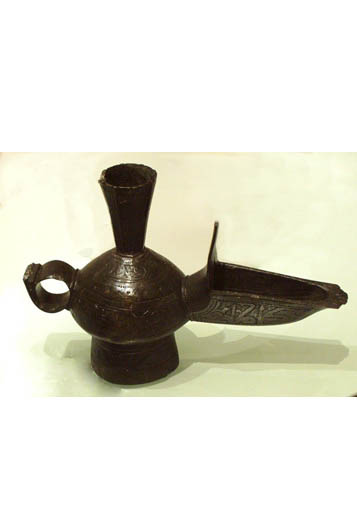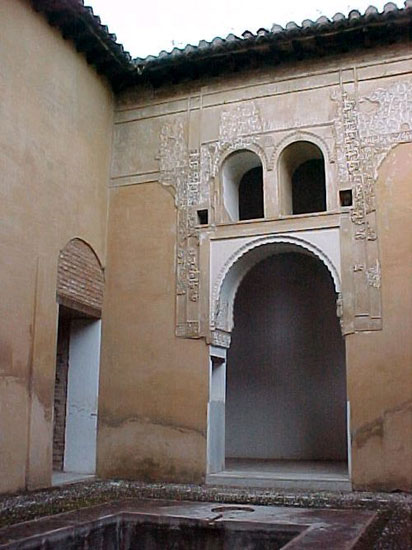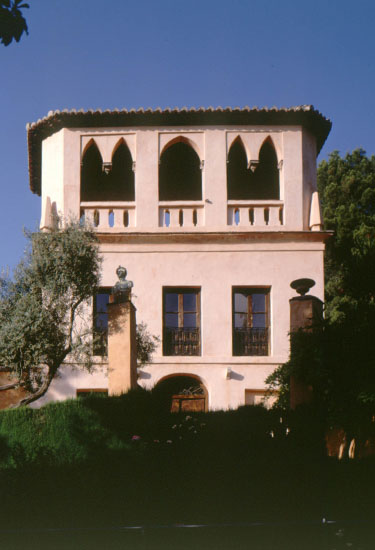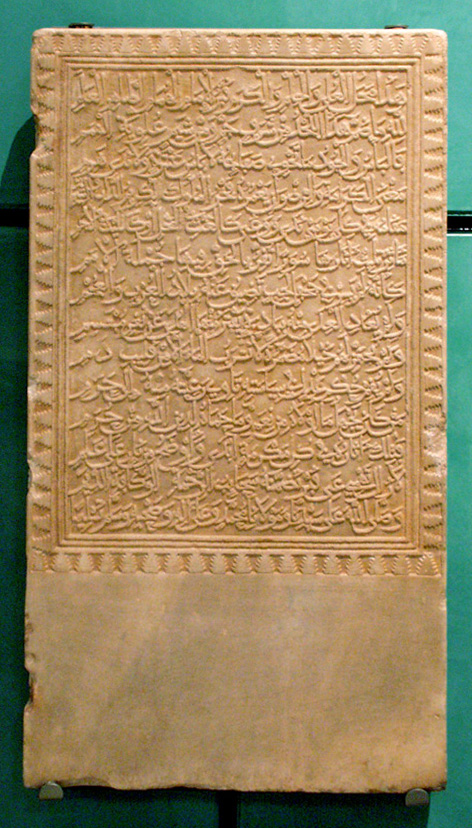Nasrid Ataifor Dish, R. 147
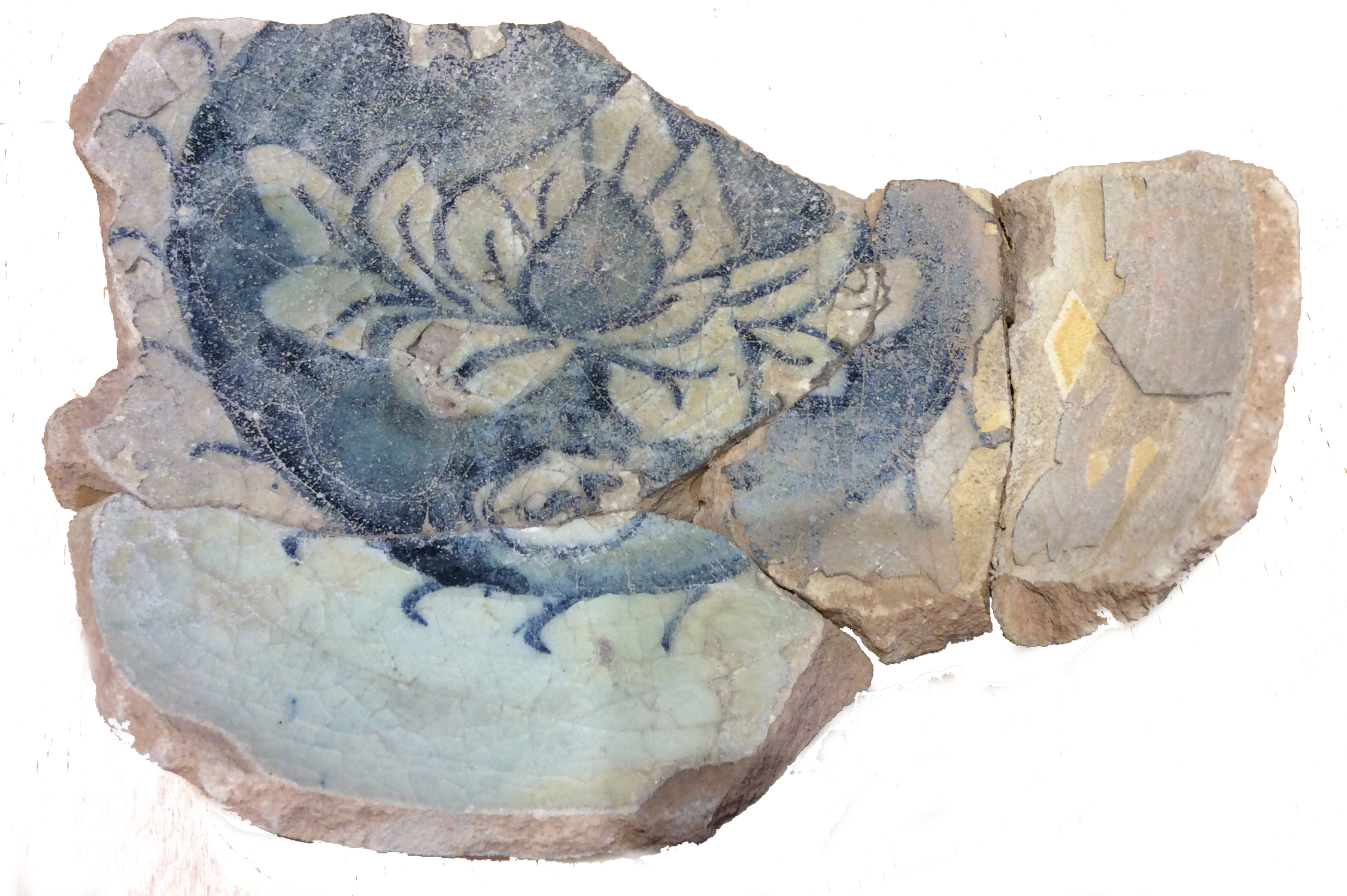
Three fragments of ceramic combine to form an ataifor dish from the Nasrid era (C. 14). This piece is glazed and decorated in white, blue and manganese.
It has a semicircular silhouette on a round base, in which there is a small hole that may well be a later addition unrelated to its original function.
The ataifor has a white enamel glaze, which does not cover the exterior surface entirely, although it is decorated with four concentric stripes in blue, divided by a wavy black line in the centre.
Inside the ataifor, there is a large blue circle with a splendid floral design in the centre depicting a white lotus flower with various petals that are just beginning to open. These surround a central almond motif, once again in blue.
The white flower motif is clearly naturalist and may have originated a world away from the frontiers of Granada in perhaps the Near or even Far East. Some classical Chinese floral motifs such as peonies, chrysanthemums or lotus flowers were brought by traders to the Mediterranean basin, where they were later adopted in Mameluke and Nasrid art. It is interesting to note that this piece of tableware is decorated with a symbol created in very distant workshops and how a particular motif can serve as inspiration for the decoration of different materials.
The layout and the style of the lotus flower in this beautiful piece are rare in Nasrid ceramics, although other variants do exist. It is however a more frequent theme in architectural decoration in the Alhambra, where this piece was found.
Time: Saturdays at 12:00





 Contact
Contact






